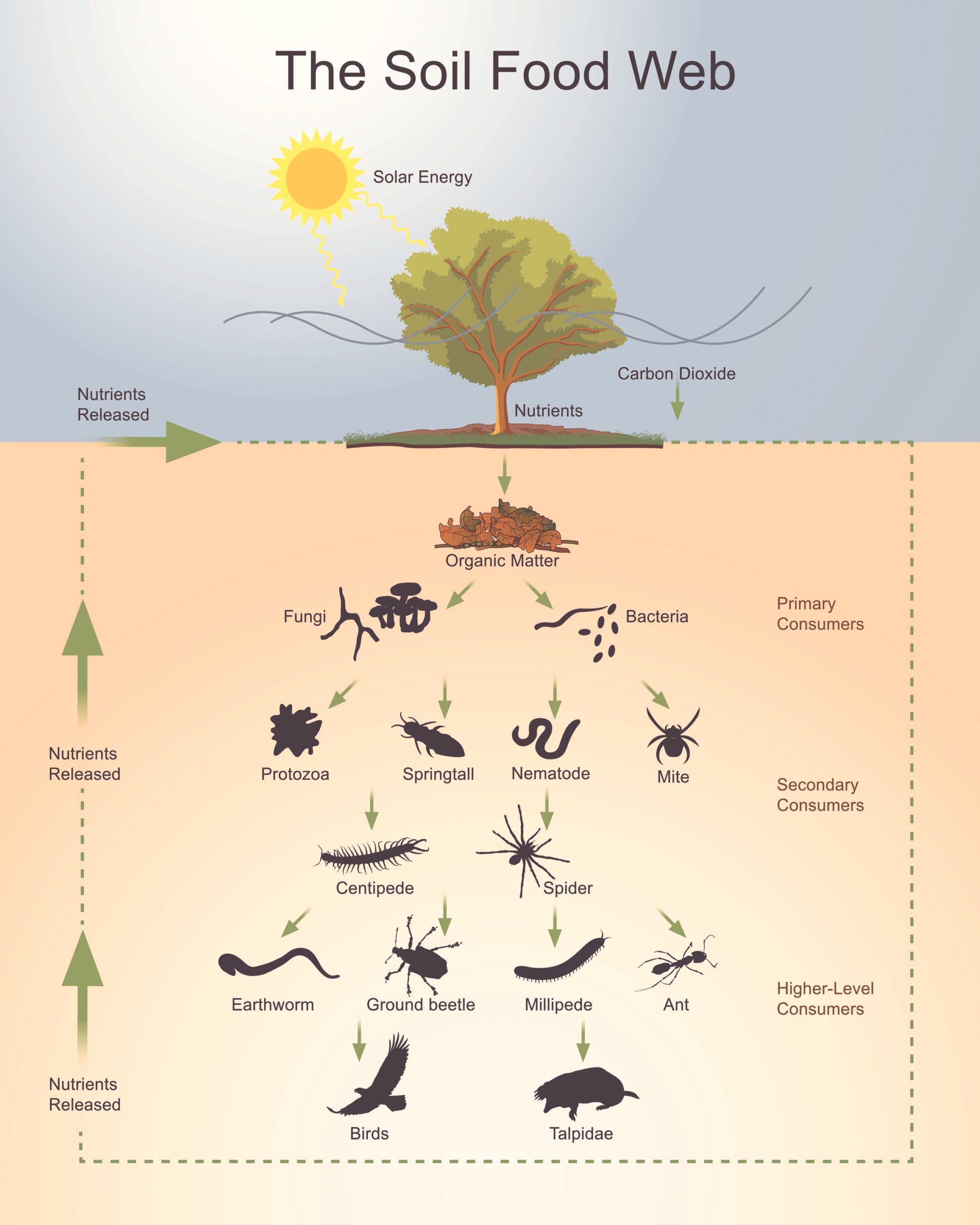Ecology will be the Frontier in Agricultural Innovation
The Soil-Food Web
Humans have cleared one-third of the world’s forests and two-thirds of the wild grasslands. As a result, wild mammal biomass has declined by 85%. Land use change for the purpose of agriculture is the primary driver of the loss of the earth’s biodiversity. The impact of this loss of biodiversity is coming into sharper focus as we begin to see the effects of climate change starkly unfold. We are now facing climate and biodiversity crises. These two crises are interlinked and inseparable. To stabilise the climate, we must also restore the earth’s biodiversity.
Salinity
Australian farmers have been living with the impacts of salinity for over a century. The wholesale clearing of land and the destruction of biodiversity have been major causes of this salinity. For more than 100 years, we have been crying about this problem, but what has been done? The previous State Government felt it to be such an intractable problem that it suspended the State Salinity Strategy for its nearly ten-year term in Government. The Government evaded its statutory responsibility under the Soil and Conservation Act of 1945 and did nothing.
In 2018, the WA State Government commissioned an Office of the Auditor General’s (OAG) report into salinity, working with 20-year-old data. This report estimated that between one and two million hectares of Western Australian land were affected by salinity. However, it took until 2022 for the State Government to enact the report’s recommendations and undertake salinity monitoring. The 2022 monitoring confirms 1.75 million hectares severely affected by salinity and a further 2.8-4.5 million hectares under threat.
Without the intent to be alarmist, the Wheatbelt of Western Australia is in a state of desertification. This desertification is predicted to result in complete ecosystem collapse, unless there is full-scale intervention to restore its health. Failure will cascade into the lower southwest of Western Australia and destroy what forests and wild habitats remain. Furthermore, this will result in the wholesale disruption of our water cycles and the desertification of the entire Southwest Land Division.
What can we do? The OAG report suggests the solution to this problem is to revegetate 80% of the Wheatbelt. While this would be the silver bullet for our State’s largest greenhouse gas emitters, it would reduce WA’s Gross State Product (GSP) by a whopping $6 billion. Furthermore, this revegetation would destabilise global food security and, by extension, geopolitical stability. Therefore, it is not an option.
The Agro-Ecological Approach
Agro-ecological approaches to food production can firstly, maintain and enhance production. They can also restore water cycles, improve soil health and increase biodiversity. At the core of these agro-ecological approaches is using biodiverse plants in our cropping and grazing enterprises. The integration of biodiversity includes practices such as cover cropping, pasture cropping, inter-cropping and relay cropping. These practices can increase below-ground microbiological diversity that spirals through the tropic levels. This can then lead to ever-increasing agro-ecological biodiversity. The image above, courtesy of Bigstock, illustrates the process.
Ecology and Innovation
How does this relate to innovation? The innovation driving this change is the development of markets for a broad category of ‘nature-based solutions.’ These are solutions that only farmers can deliver to society. They include carbon offsets and insets and protection of flora and fauna. Added to these are broader ecosystem services such as restoration of water and nutrient cycles. According to Nature for Climate, $44 trillion of global economic activity relies on nature. Today Nature-Based Solutions markets are valued at $133 billion annually and are expected to quadruple by 2030.
Farmers are the primary suppliers to these markets, and to most people’s surprise, Australia is leading the world in Nature-Based Solutions markets. While it is early days in Western Australia, Australia’s carbon market is over ten years old and moving into a maturing phase. Market participant capacity is growing, policy is aligning, and institutional support is strengthening. The Nature Repair Bill is a market innovation moving through the Commonwealth Parliament now. This market mechanism will pay farmers to protect and restore on-farm biodiversity.
Carbon Sync supports farmers through the entire value chain of the production of Nature-Based Solutions products. Our primary offering to farmers is science education, planning and technical support, and designing and implementing bespoke interventions. We plan these bespoke interventions to enhance production and improve ecological and economic outcomes for your enterprise.
If you’d like to learn more about Carbon Sync, please sign up to receive our newsletter. We hope to meet and speak with you soon.

